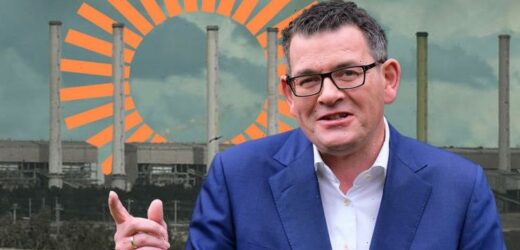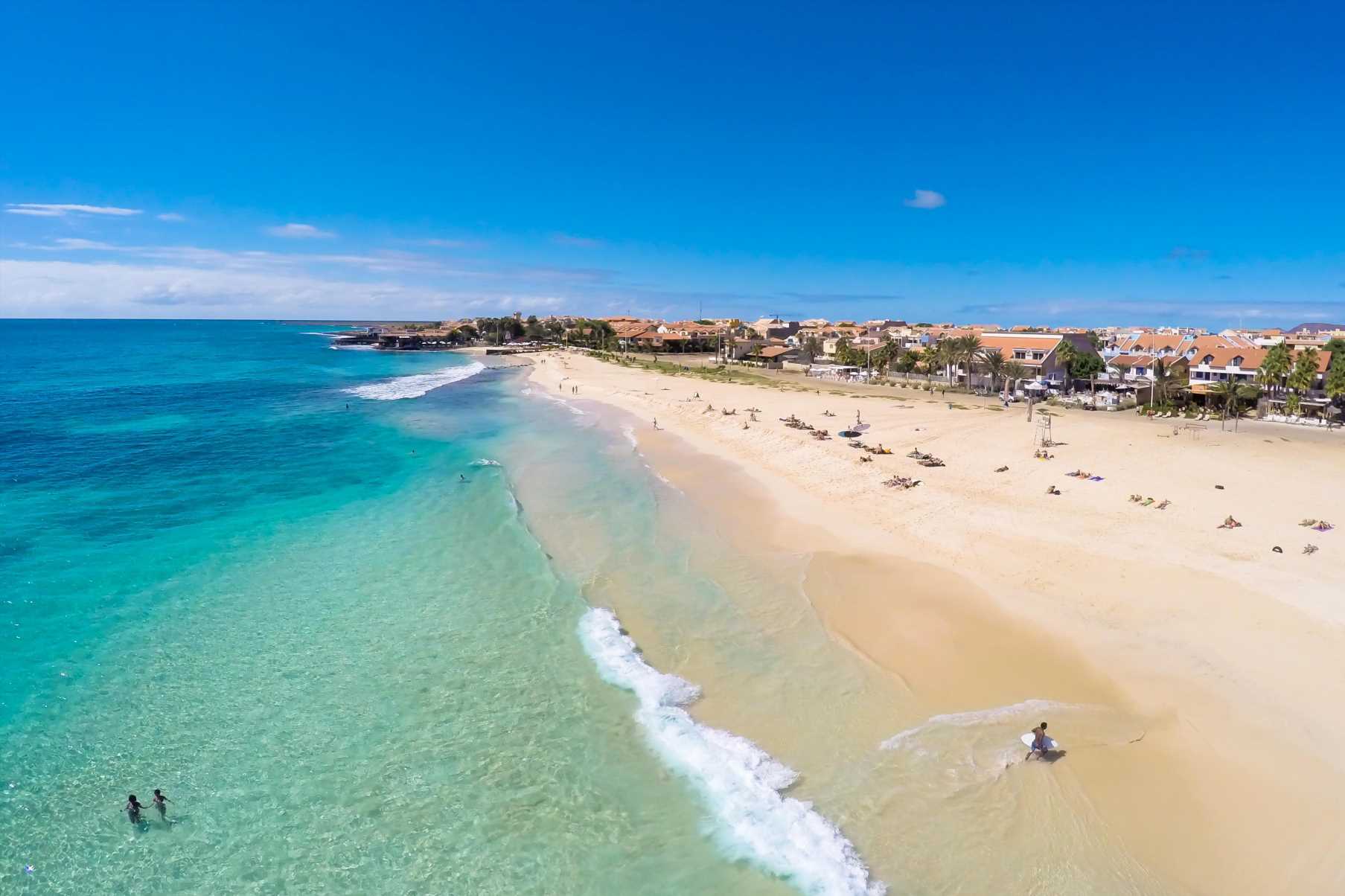In a few short years, electricity flowing into Victoria’s grid from brown coal will cease.
By about 2035, and possibly sooner, the state’s power needs will be met almost entirely by a complex network of wind and solar generators dotted across the east coast grid, often in areas not previously connected to the state’s high-voltage transmission lines. Backup will come from vast arrays of batteries, hydroelectricity and perhaps some gas.
Among the new renewable generators competing to sell power will be the Andrews government’s State Electricity Commission, the result of a promise hatched in the lead-up to last year’s state poll as voters grappled with soaring energy bills.
If you believe the government’s rhetoric, the 4.5-gigawatt publicly owned renewable energy generator will not only drive down energy prices, it will help create tens of thousands of well-paid public-sector jobs and put power sector profits back in the hands of the people.
With the election now fading into the rearview mirror, the government is faced with the task of delivering on these lofty goals.
But exactly what is the new SEC, and how will it operate? Beyond what was announced by Premier Daniel Andrews at an October 20, 2022 press conference, there are few details.
What is clear is that the world has changed dramatically since privatisation of the old SEC.
The SEC logo, brandished by Andrews during the campaign on a new black jacket, might have been a powerful symbol. Now the challenge will be to remake the SEC in a world in a world where electricity production technologies have changed profoundly, where transmission is separated from generation, where there are wholesale markets and where customers can choose who they buy electricity from.
Looming challenges
Transitioning from coal-fired to renewable energy will involve coordinating different sources of power across the grid to keep Victoria’s energy flowing in a predictable way. It will pose enormous technological, regulatory, financial and political challenges.
Coal is on the way out, but it’s not straightforward to replace it.Credit:Joe Armao
The pace of transition has been so rapid that the Australian Energy Market Operator (AEMO) recently predicted that in three years there will be enough renewable energy available, at certain times, to meet 100 per cent of demand.
But with the system already under stress, questions are being asked about how the grid, built predominantly to syphon power produced in the Latrobe Valley to Melbourne and regional cities, will handle the rapid increase in intermittent energy produced by wind and solar. While coal turbines produce steady, predictable pulses of electrons, renewable energy is dependent on ever-changing climatic conditions.
Even under the flurry of existing and committed energy projects in the pipeline, AEMO’s modelling suggests Victoria will face power reliability gaps as early as 2024, with more serious breaches possible from 2028 onwards.
Woe betide the government that lets the lights go out.
Over the course of 2022, as energy prices were pushed into the stratosphere by Russia’s invasion of Ukraine and concerns about east coast gas shortages, it became increasingly apparent that Victoria was heading towards an energy cliff.
For the Andrews government, the finality of the situation was hammered home by AGL’s announcement it would shut its hulking Latrobe Valley Loy Yang A power plant, which supplies about one-third of the state’s electricity, a decade early in 2035.
The State Electricity Commission mark II was as much born out of a political recognition – or perhaps fear – that the market alone might fail to provide enough renewable energy to offset the looming demise of brown coal.
As it turned out, the idea, as expressed by Andrews during the campaign, of taking profits back from “greedy”, “price-gouging” power companies also turned out to be strong politics.
Andrews’ announcement was relatively simple. The government will hold a controlling interest in renewable energy projects, “owned by every Victorian to benefit every Victorian”, generating 4½ gigawatts of power to offset the closure of Loy Yang A.
Initially, there will be a taxpayer-funded investment of $1 billion, with the remaining cash to come from “like-minded” entities such as industry superannuation funds which, according to Andrews, will be focused on a fair deal for Victorians, not just profits.
Profits earned by the government will be invested back into the network as part of a 10-year plan to drive down power prices and reach the state’s ambitious emissions reduction targets.
‘We’ve not excluded anything’
Great politics it might be, but the announcement left a string of unanswered questions: will the new SEC, unlike the old one, be run at arm’s length from the government, with an independent board? Will it compete with other electricity sellers in the retail space to drive down prices? Or will it compete with wholesale providers of renewable electricity and make it less attractive for them to invest (the so-called “crowding out” question)?
How much will it ultimately cost? How much further might the idea be taken? What might those “like-minded” superannuation funds, which have a legal obligation to invest in their members’ financial interests, be offered as an incentive to chip in?
Above all, is the SEC really being revived? Or is this just a huge branding exercise?
“I’m struggling to see what market failure it is addressing.”
“It’s not going to be the old SEC,” Energy Minister Lily D’Ambrosio told The Age this week. “It will be a new, modern SEC.
“Our energy system has been privatised for a long time … Big things were promised for ordinary Victorian families and businesses, and the evidence is clear … it failed to deliver.”
After re-establishing the SEC as a new entity in the Latrobe Valley, D’Ambrosio says a first priority will be building the 4½ gigawatts of new renewable energy. According to the government, this will add $9.5 billion to the state economy and help create 59,000 jobs by 2035 in solar, wind and emerging energy industries.
‘Not ruling anything out’: Victorian Energy Minister Lily D’Ambrosio.Credit:Oscar Colman
The government isn’t ruling out the idea that the SEC could also play a role retailing electricity. Just like the good old days, Victorian consumers could once again have the option of signing up for government-supplied power.
“So we’ll certainly have more to say about what … the model will be, but we’ve not excluded anything from what the SEC could certainly do into the future, and that includes retailing,” D’Ambrosio says.
The new entity will almost certainly be run as a state-owned corporation, controlled by an independent board that will include industry experts operating at arm’s length from the government.
This week SEC mark II was officially declared a “reorganising body” under the State-Owned Enterprise Act. That means it now is more than a mere shell and technically has the power to make its own decisions as a publicly owned legal entity.
The government is also promising a special SEC expert panel, to provide advice on the best model, to be chaired by John Bradley, secretary of the Department of Energy, Environment and Climate Action.
In line with common practice for state-owned enterprises, one share in the SEC will be held by the treasurer, with a second share to be held by the premier, on behalf of the public.
A small player
But exactly how it will drive down prices is still being thrashed out. D’Ambrosio said increasing the supply of renewable energy would, as a simple economic proposition, place downward pressure on prices because they are cheaper to build than fossil-fired power stations and the inputs are free.
One of D’Ambrosio’s key contentions is that energy companies have deliberately failed to reinvest in new generation capacity: “Keeping energy supply on the shorter side means keeping profits high,” D’Ambrosio said. “High profits come from high prices.”
Bruce Mountain, director of the Victoria Energy Policy Centre at Victoria University, said the retailing of electricity was “absolutely on the agenda”, suggesting that to drive down prices the Government would need to do this.
“One of the big promises was lower prices for customers, and simply selling your production on the wholesale market is no guarantee customers will get the gains,” he said.
But Alison Reeve, deputy director of the energy and climate program at the Grattan Institute, said she struggled to see what the advantage would be for consumers if the government became a direct retailer, given the SEC would be a relatively small player under the government’s proposal.
“I’m struggling to see what market failure it is addressing,” she said. “If Labor is building 4.5 gigawatts of capacity it’s still a very small player compared to the large generators like AGL and Origin.
Nor is there any guarantee that government investment would necessarily drive down prices, particularly if the SEC is used as a source of government revenue, in a similar way that the government has used its water monopoly in Victoria to extra profits in the form of dividends.
David Havyatt, an energy expert from the University of Wollongong, argues government investment in renewable energy generation probably won’t increase electricity generation overall. On the contrary, he argues, a more likely scenario is that it reduces it by displacing private-sector investment.
Havyatt, who contributed to the recent book On the Grid: Australian Electricity in Transition, also warns it is unlikely that private-sector power companies will be competing with the government-owned SEC on a level (or “competitively neutral”) playing field, given the government doesn’t pay tax and has other advantages, such as lower borrowing costs.
Indeed, the Andrews government’s own “competitive neutrality” policy forces publicly owned entities to at least attempt to offset their inherent advantages “unless there are clear public interest reasons for not doing so”.
Whether there are “public interest reasons” for allowing the new SEC to exercise its competitive clout is unclear.
This raises the possibility of an interesting catch-22, according to Havyatt. If the government investment isn’t competitively neutral, then it will drive other investment from the market. Yet if it is, then it raises the question of why the government investment is needed in the first place.
The real problem
There is a view among energy experts that Victoria’s problems have more to do with an urgent need to upgrade the electricity grid to allow the system to cope with a dramatic increase in intermittent wind and solar energy. The problem, as many experts see it, is not a lack of potential investment by new power generators, it is instead a reluctance to invest if the grid is unable to handle the new dispatchable energy.
Transmission is the key issue.Credit:Joe Armao
The market operator recently told The Age that renewables with backup “firming” generation from batteries and pumped hydro would be required to replace retiring coal, meet emissions targets and keep essential electricity secure, reliable and affordable.
But such investments, including the SEC, will only be enabled by new transmission lines across the east coast grid. Both the state and federal government are moving ahead with upgrades to the grid. But will they happen soon enough?
AEMO has, for example, called for the construction of about 10,000 kilometres of transmission lines to better dispatch solar and wind energy to where it is needed.
It also says the equivalent of 40 large synchronous condensers, which act in a similar way to the turbines of coal-fired power stations, will be needed to stabilise the flow of energy from intermittent renewable sources.
It also wants a major upgrade of outdated computer systems that monitor and control the flow of power and an extraordinary 30-fold increase in battery and hydro storage over the next 25 years.
Will the SEC deliver all this? The government’s ambitions are high, but its explanations so far are sparse.
Most Viewed in National
From our partners
Source: Read Full Article





